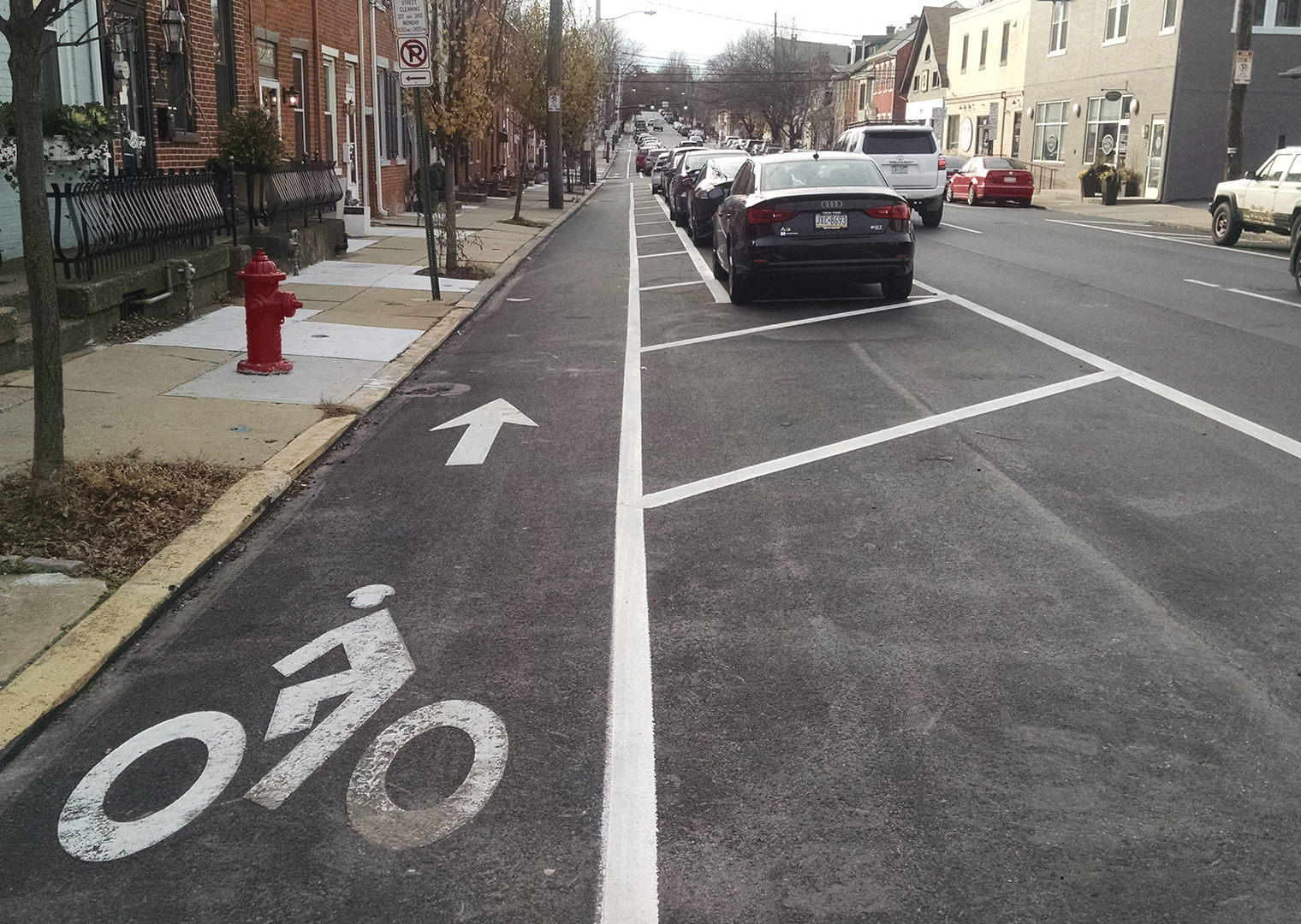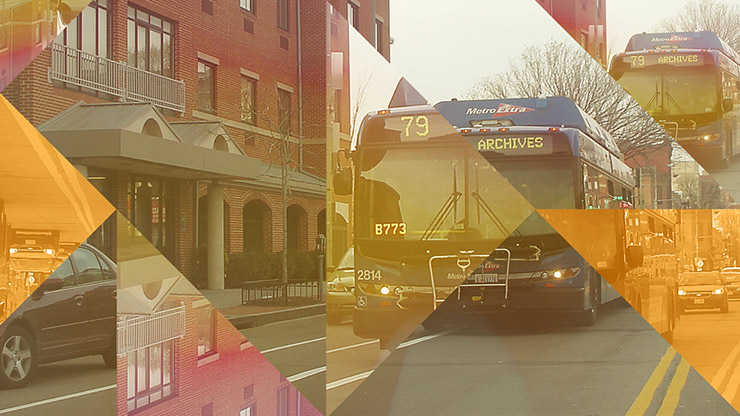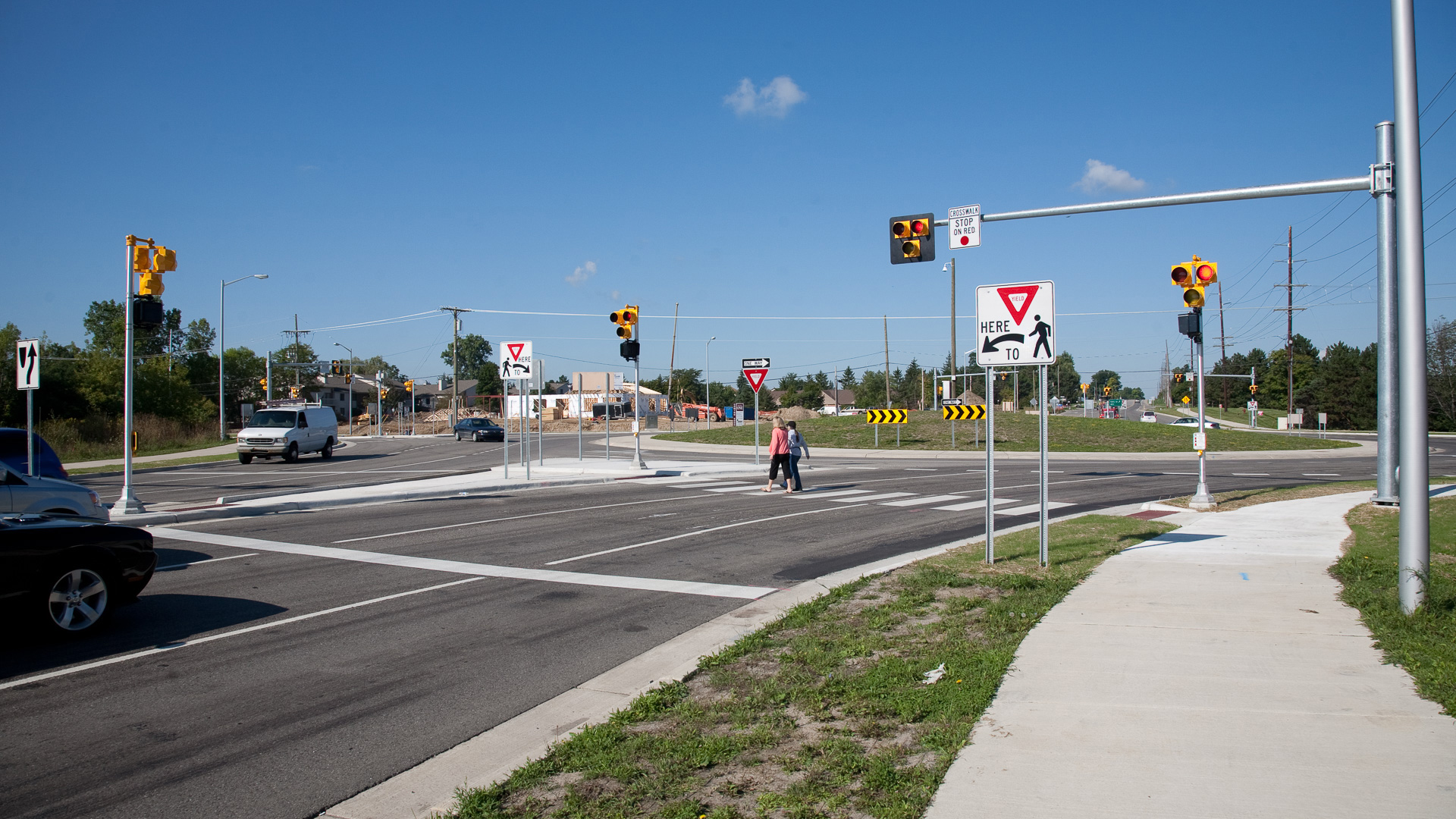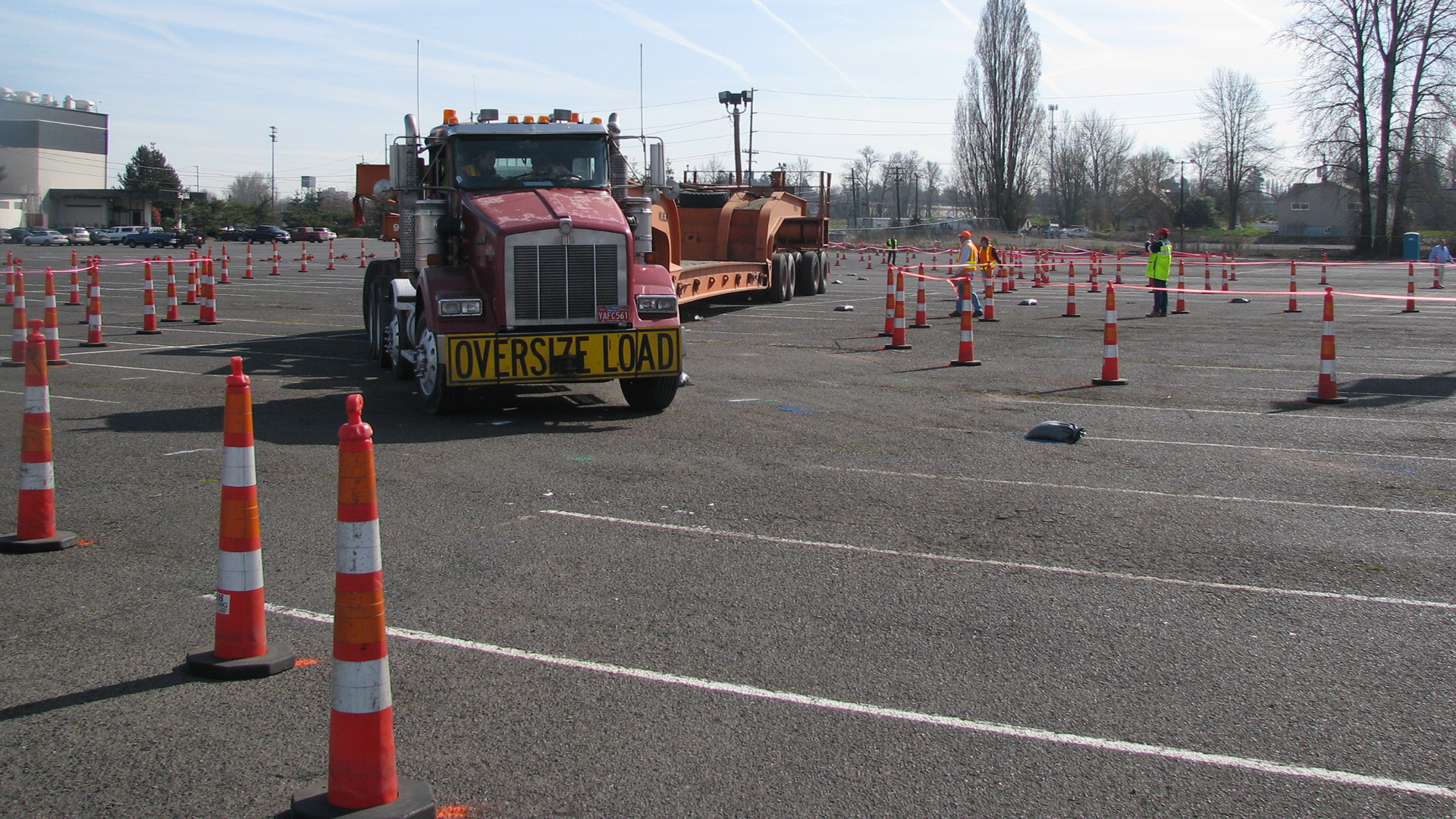Challenge
Lancaster has a rich history, even serving for a time as one of the earliest capitals of the nascent United States. Its downtown is highly walkable, but a transportation network that was established in colonial days left the city with narrow streets and very few bicycle facilities. One of the top priorities of the 2019 Lancaster Avenue Transportation Plan was to create a high-quality bicycle route on Walnut Street, the main westbound street through downtown Lancaster.
Solution
Kittelson worked with the City of Lancaster to develop plans for two one-way separated bike lanes through the City. Walnut Street is the westbound route. We began by documenting existing conditions, such as land uses, street width, intersection control devices, and cross street directions, along the corridor. A left-side parking separated bike lane was determined to be the preferred option. Kittelson prepared preliminary and final design plans, which required a careful block-by-block evaluation to address varying site conditions such as street width, drainage, parking, and intersection traffic control. In addition to the separated bike lane itself, the project included safety elements such as corner daylighting and slow turn wedges.
The Outcome
A Model for Making a Historic City Bikeable
Construction of the separated bike lane was completed in 2019. It has proven a popular route for cyclists to and through downtown Lancaster and has served as proof of concept for several more separated bicycle facilities throughout the city, including the parallel Eastbound Connector that is being designed by Kittelson. Moreover, the success of the Walnut Street bike lane makes it a model for other Pennsylvania communities who are considering similar facilities.



